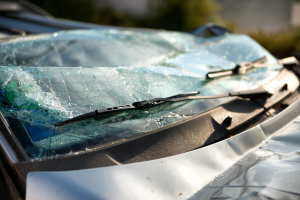People often imagine that an insurance write off mean s a car so badly damaged in an accident that it is beyond repair. As such it will be written off and sent to be scrapped.
s a car so badly damaged in an accident that it is beyond repair. As such it will be written off and sent to be scrapped.
This is, of course, right in one sense, but did you know there’s actually so much more to it?
In our latest blog, we have put together a guide which shows insurance write offs explained for anyone wanting to know more about what they actually mean.
Why your car might be declared a write off
If you’re unfortunate enough to be in a car accident, one of the first things you’ll need to do (after recovering) is to contact your insurance company. They may then inform you that your vehicle is a write off and decide to keep it, rather than getting it fixed, giving you a cash pay-out instead.
This is because insurance companies are obliged to return the vehicle to the condition it was in before the accident occurred. And if this means the cost of repairing it will be more than, or above a certain percentage of, what it is worth, then it can be declared a write off.
Different insurance companies have differing levels of up to what percentage of the car’s value they will pay for repairs, but ultimately it doesn’t have to be a total wreck.
Even if the damage is just cosmetic, it means the insurance company could still write it off, because it’s beyond economical repair.
They will discover the cost of getting the vehicle back to the condition it was in before the accident, by employing assessors to inspect it before they make their decision.
Insurance write off categories
While cars can be written off for different reasons, there are also different categories of insurance write off which come with separate guidelines on what can be done with the vehicle after the accident.
- Category A – so badly damaged, all of it must be destroyed.
- Category B – main shell should be scrapped, but some spare parts may be re-used on other vehicles.
- Category C – vehicle can be repaired and returned to the road, although the cost to do this is more than what it is worth.
- Category D – damaged vehicle can be repaired, but the costs of doing this are significant enough for it to be deemed a write off.
So, your car is a write off, what happens next?
If a car is a Category A or B write off, then, in accordance with the ABI Salvage Code, it must be taken to a DVLA approved scrapping facility, where, depending on the category of write off, some parts may be removed and sold on.
For Category C or D vehicles, the insurance company can choose to sell it on, either to the owner, or someone else. In the case of a Category C situation the keeper must notify the DVLA that the vehicle has been passed to the insurer.
Bear in mind that when a vehicle is written off, the cost to repair it is decided by the insurance company’s own standards, while doing it using spare parts or using a different garage for repairs may be cheaper. It’s for this reason why people can often find a bargain when they buy a Cat D car, because they can get it fixed up for a lot less than the figure reached by the insurance company.
If you have an insurance write off in Leicestershire call us
It can be a pretty traumatic time getting in a car accident, only then to hear that you’ll be unable to get your car back on the road.
If your vehicle has been declared a write off by your insurance company, whether it’s as a category A, B, C or D, you can get in touch with us today for some helpful and friendly advice on what happens next.